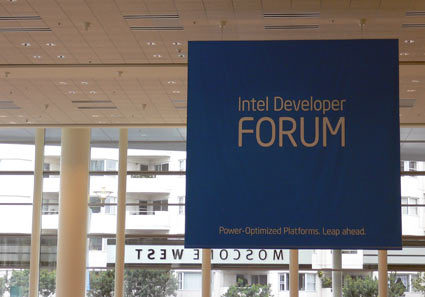IDF Spring 2006: Will Intel's Core Architecture Close the Technology Gap?
IDF Spring 2006: The Core Of Intel 3.0
Intel's Developer Forum has always been a great event to get up to speed on processor technology trends and developments. This year, however, IDF was much more than an interesting summit for pros, geeks, analysts and journalists. For starters, the company's CTO Justin Rattner referred to this year's event as the most memorable IDF since its invention in 1997. It is Intel's stage to show the world where its technology is going, and it did use this stage to announce its willingness to shift the balance of processor performance power from Austin back to Santa Clara.
It has been two bumpy years for Intel's processor business. The introduction of the 90-nm Pentium 4 (Prescott) marked a turning point, because all new Pentium 4 releases increased power consumption by a significant amount without a commensurate boost in performance. Intel tried increasing clock speeds with its NetBurst architecture, but it hit the ceiling faster than expected.
At the same time, AMD has offered a more efficient processor architecture, and recently extended its lead further with the introduction of dual-core models. Intel has thus been taking a beating both in performance and in energy efficiency.
Some even began to speculate that Intel was out of the running. However, we should not forget Intel's financial, manufacturing and other resources are 10 times that of AMD's. Hence, it is obvious that such a corporation would not just walk off the battlefield. So, last year, a generation change was announced, comprising Intel's next-generation micro architecture. All new Intel processors in the third quarter of this year are going to be based on one common design, and they are targeted to do big things: Merom (mobile) is to add 20% more performance compared to the Core Duo; Conroe (desktop) is to boost performance by 40% while decreasing power requirements by 40% and Woodcrest (for servers) will purportedly increase performance by as much as 80%, while reducing power by 35%.
It sounds almost too good to be true, which is why Intel focused on disclosing many technical details on the architecture (which is called Core Micro Architecture). We will go through the key details first, and then have a look at more developments in the mobile and platform areas, since IDF, of course, it not only about processors.
Intel's chief technology officer Justin Rattner is the brains behind what he called "Intel 3.0".
Get Tom's Hardware's best news and in-depth reviews, straight to your inbox.
Current page: IDF Spring 2006: The Core Of Intel 3.0
Next Page Intel's Energy Awakening
Patrick Schmid was the editor-in-chief for Tom's Hardware from 2005 to 2006. He wrote numerous articles on a wide range of hardware topics, including storage, CPUs, and system builds.

